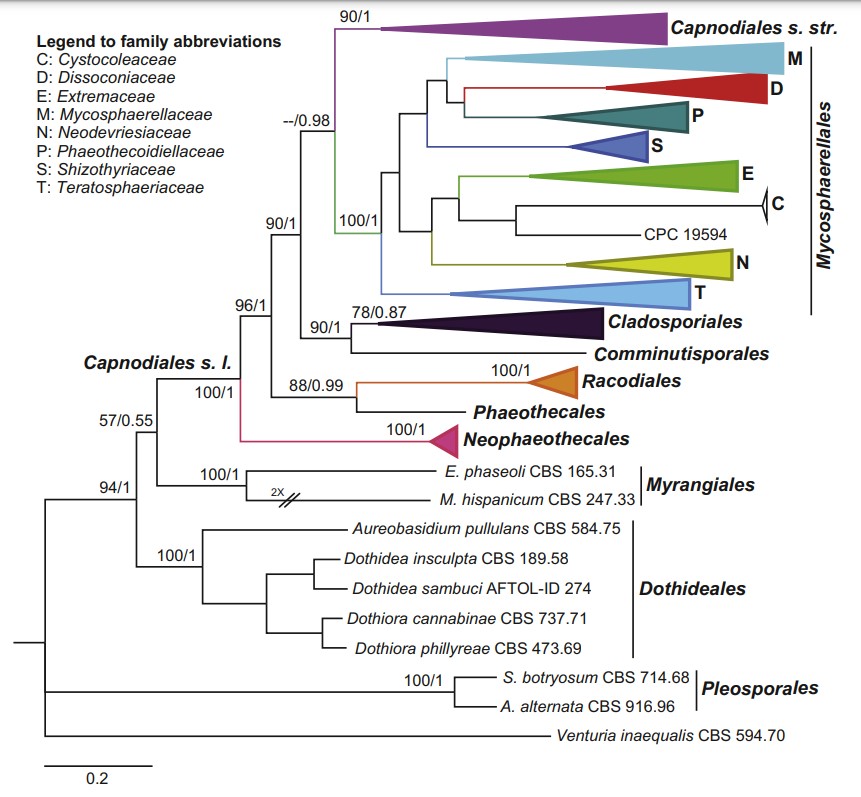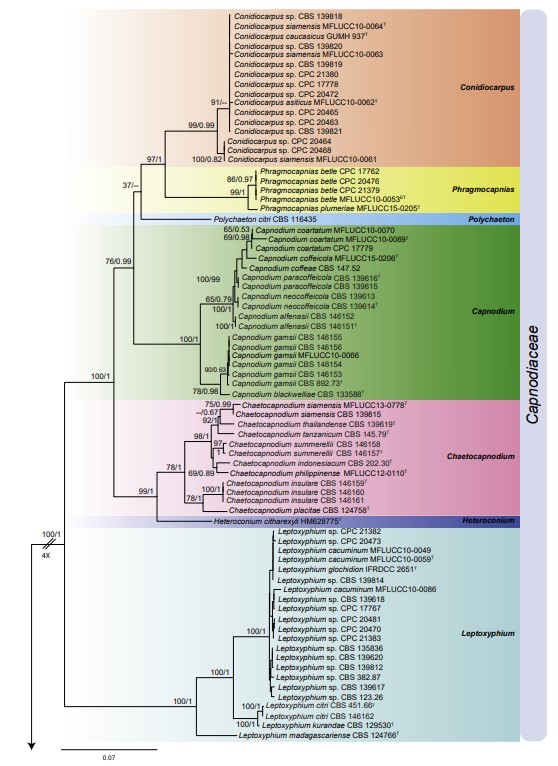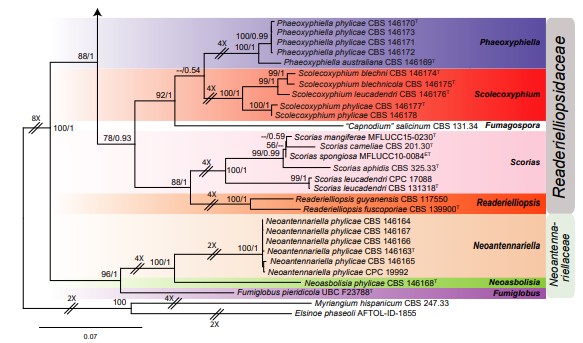Phaeoxyphiella Bat. & Cif., Quad. Lab. Crittogam., Pavia 31: 145. 1963.
MycoBank number: MB 9326; Index Fungorum number: IF 9326; Faces of Fungi number: FoF 11072
Type species: Ph. morototoni Bat. & Cif.
Notes: A search in Index Fungorum and MycoBank (March 2019) revealed seven names in Phaeoxyphiella. As discussed by Hughes (1976), Batista & Ciferri proposed this generic name for seven species, which fall into two groups based on conidial morphology. Four species, Ph. bahiensis, Ph. fischeri, Ph. morototoni and Ph. walteri, have long, fusoid or spindle-shaped, deeply pigmented, multiseptate phragmoconidia. Two species, Ph. californica and Ph. rondeletiae, have much shorter, oblong to ellipsoidal, 3-septate phragmoconidia, which are at first hyaline, slowly becoming brown. The seventh species, Ph. callitris, has 5- septate conidia, but is a nomen nudum because it lacks a Latin diagnosis. There are no cultures or sequences available for any of these species. In this study, we examined five isolates which based on phylogenetic inference clustered in two distinct clades (Figs S1, 2).

Fig. 1. Reduced phylogenetic tree inferred from a Bayesian analysis based on a concatenated alignment of LSU, TEF-1α and RPB2. Bayesian posterior probabilities (PP) and maximum likelihood bootstrap support values (ML-BS) are indicated at the nodes (PP/ML-BS). The scale bar represents the expected number of changes per site. The lineages in Capnodiales s. l. are indicated in different colours. The tree was rooted with Venturia inaequalis (CBS 594.70).

Fig. 2. Phylogenetic tree inferred from a RAxML search of a concatenated alignment of LSU, ITS, TEF-1α and RPB2. Maximum likelihood bootstrap support values (ML-BS) and Bayesian posterior probabilities (PP) are indicated at the nodes (ML-BS/PP). The scale bar represents the expected number of changes per site. Families and orders are highlighted in blocks of different colour and indicated to the right of the tree. The tree was rooted with Myriangium hispanicum (CBS 247.33) and Elsinoe phaseoli (AFTOL-ID- 1855). T Ex-type, ET Ex-epitype.

Fig. 2. Continued.
Species
